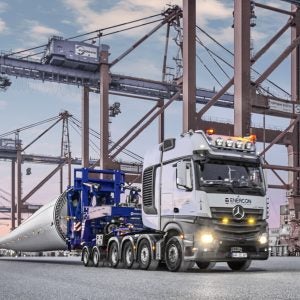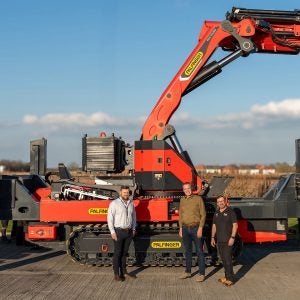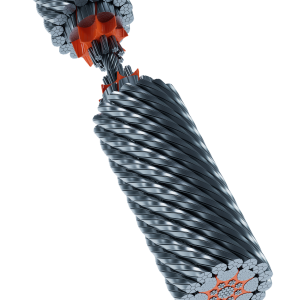He was born in Chicago, has a Bulgarian father, a Cuban mother, a French family, he lives in Paris and spends most of his working hours in Germany these days. So where does Steve Filipov consider himself to be from? He admits that in sporting events he roots for both Bulgaria and France but only, it seems, once the USA has been knocked out. He is, after all, an American citizen and US passport holder. So he considers himself American. But Europe, and Paris in particular, is where he considers to be home. It is where he has lived, off and on, since the age of 12 when his father Fil was transferred by International Harvester.
Education came by way of the International School in Brussels, where he boarded, and the University of Texas, where he studied business administration. One suspects, however, that a more practical education came from the short period in the early 1990s, fresh out of university that he set himself up as an international trading company. This involved filling up a truck in France with anything he though he could sell, mundane products mostly, such as chocolate or shirts, or occasionally some industrial equipment, and driving to the newly opened eastern Europe, including the land of his father, Bulgaria. Occasionally he’d sell the truck too and fly home. He turned a profit, he says, but it was not to prove the route to riches that he had imagined. He was a few years ahead of his time, he believes, because there was not yet enough money in the east to provide a large enough customer base for his goods.
In 1993 Steve joined Terex with his father and Ron DeFeo. Fil Filipov and DeFeo had been colleagues at JI Case, which had taken over International Harvester in 1984. Fil Filipov returned to the USA to manage Koehring and Terex’s subsequent crane acquisitions. Steve stayed in France, working with Marklift Europe, then Clark France and then in 1995 PPM. With the acquisitions of Comedil and Peiner, the importance of the European operations grew and although each division had its own manager, Steve was his father’s link man in Europe. In 2002 the Filipovs cut their teeth on their first German acquisitions – Atlas and Schaeff. Employment law, in particular, was what made German companies a trickier challenge. As it turned out, Atlas and Schaeff were just a prelude to the big one – Demag – acquired in October 2002. With Demag, and because of the current state of the US market, 80% of Terex Cranes’production is outside of the USA.
The Filipov legacy
Steve Filipov has been handed control of a company very different from the one that he and his father first joined 10 years ago. For a start it is five times bigger than it was, in revenue terms. There is a popularly held perception that the Terex business model of cutting costs and reducing prices also involves cutting investment, milking companies and closing them. Closure of two factories in the USA and the Peiner factory in Germany in the past year or so are cited as evidence. It is a perception that Steve Filipov says is false, since the product lines still exist – it is just that their production has been made more efficient, and therefore profitable,by relocation. Manitowoc closed a boom truck factory last year too, he points out.
Demag accounts for about 60% of Terex Cranes’ business. According to Filipov, Demag’s share of the worldwide all terrain market is now 30%, up from 20% when Terex took it over. The target is 40% of the worldwide AT market. Some countries are going better than others, of course. In 2003 passed Grove and Liebherr in the US all terrain market and took more than 50% of the UK market. However, Demag’s home market of Germany remains unconvinced, it seems. In Germany, market share in the first 10 months of 2003 was just 15%. This represents a recovery, from the 12% share that Demag had in the first half of 2002 when the future of the company was in the air. But it is still down on the 20% mark that has been Demag’s average share in recent years.
Prices have come down by 10% to 15% on average, Filipov says. An AC 100 is available for not much more than E 500,000, compared with E 600,000 before Terex. While not every sale makes a profit, he admits, costs have been cut significantly, partly by expanded purchasing power, partly by reorganizing production. Under the old management, Demag’s old factory on Dinglerstrasse in Zweibrücken produced telescopic cranes above 100t capacity and lattice boom cranes. The smaller telescopics were made at the nearby Wallerscheid plant, a newer and more efficient factory. Wallerscheid was also where all the telescopic booms were cut and bent. Terex has already saved E 3m a year by reducing the amount of transportation between Wallerscheid and Dinglerstrasse. Further savings will come as all telescopic crane production is moved to Wallerscheid, leaving Dinglerstrasse just for lattice boom cranes. More fabrication work has been outsourced, including to Demag’s subsidiary company in Hungary. Laser cutting beds have been moved from Wallerscheid to Hungary. Except for the first dozen machines of newly introduced models, not much is actually fabricated by Demag any more. It is mostly an assembly operation. Demag remains the only major cranemanufacturer to make its own telescopic booms but even this is set to go to an eastern German subcontractor.
Crane manufacturing is ‘not rocket science’, Steve Filipov says and making production more efficient requires common sense rather than a degree in production engineering.
Terex also has crane factories in France, Italy, Australia and the USA. In France PPM’s future looked bleak when Terex bought Demag but it seems to be enjoying a slight renaissance, with its new three-axle AC 55 to add to its successful two-axle cranes, which Filipov maintains are ‘the best two-axle machines on the market’. Although employee numbers were cut from 270 to 170 in 2003, PPM produced 5% more product than in the previous year, thanks to a 30% increase in the number of reachstackers produced.
In Italy Bendini had its best year ever in 2003, with 260 RTs produced. Many of them were for construction of the Milan- Bologna high speed railway, although half were for export. Filipov does not expect this performance to be repeated in 2004 – around 200 units a year is more usual.
Also in Italy, sales of Comedil tower cranes increased 20% in 2003, year on year. Production of Ferro self-erectors has doubled from 400 units to 800 units and that is to be increased again. ‘That market is huge – probably five to six thousand units a year worldwide,’ Filipov says. New product development is planned for Comedil top slewers, concentrating on smaller flat-tops.
The Peiner tower crane factory in Trier, Germany, has been closed and sold. Three models – the 315, 515 and 575 are to be produced at Demag’s Dinglerstrasse factory. Orders have been received from Arcomet in Belgium and from customers in the USA.
Steve Filipov spent a lot of time in Australia after the Demag takeover, integrating operations with the existing organisation of Franna, the tractor crane manufacturer. ‘The business is going OK in Australia. The market is up there,’ he says
Accounting for just 20% of production now, the US operation is based on two factories – mobile cranes and boom trucks in Waverley and crawlers in Wilmington. Wilmington is the old American Crane factory and today it makes only boom sections for cranes brought in from IHI of Japan. There are no longer any original American Crane crawlers being produced. About 200 IHI crawlers have now been sold in the USA and the first sale to a European customer has been made, two CC 280s to Kranen Michielsens of Belgium.
As to how he intends to tackle the depressed market in the USA, Filipov says: ‘The focus for 2004 is getting new product out, and we’ve got a lot of projects going. ’
Continuity
At 35, Steve Filipov is young to be in charge of a billion dollar company but there are two factors to consider. Firstly, youth is never a disadvantage at Terex. Group president and CEO Ron DeFeo was in charge of Case Europe at the age of 38 and has no reservations about promoting thirtysomethings to top positions. Colin Robertson, for example, was promoted to president of Terex Construction in his mid thirties.
Secondly, the industry seems to be going through a generational shift. Many of the old guard are moving out during the market downturn and the next generation are finding their feet in preparation for the eventual upswing. Manitowoc Crane Group is now led by 42-year-old Glen Tellock. Tadano has moved to third generation of family leaders, under Kouichi Tadano who is in his forties. Among crane buyers, too, family-owned rental companies founded 20 or 30 years ago – in the early days of telescopic mobiles – are passing into control of the second generation.
It is unusual for publicly owned companies, like Terex, to pass such senior positions from father to son but Ron DeFeo believes the advantages outweigh any possible negative feelings. ‘Steve was the logical choice to continue the successful initiatives of Terex and Fil in this business. I have watched Steve grow and mature and I am confident that his leadership will provide a high level of continuity. This is important in a business. You need continuous improvement and continuity with the past. Change is inevitable but we need it to be seamless and positive.This accomplishes that.’
DeFeo continues: ‘We have never discouraged family members to work within Terex. Obviously, there are always concerns but I have found the benefits outweigh the risks. This is a little bit of the Terex magic, if I can be so bold to say, that makes our employees feel special. Despite our aggressive business practices we have a sincere desire to make our company a family of entrepreneurs that are focused on delivering superior value to buyers of our equipment.’
Throughout the rollercoaster ride of acquisitions and restructurings, the Filipovs have inevitably upset people who were thrown off, or jumped, along the way. Since October 2002, for example, about 500 people have left Demag; some were laid off, while others decided they didn’t like the new environment and chose to go. Steve Filipov says that there will be no changes at Terex, either in policy or style, and he intends the handover to be seamless – a process aided by the retention of Fil Filipov on a part-time consultancy contract for three years.
‘I don’t think it will be any different,’ Steve Filipov says. ‘It [the company] has been successful because of the business model and the energy we’ve put into it. By “we” I mean me and my father.’
Energy is certainly a significant part of the equation. Steve works as hard as his father and says he finds little time for relaxation, beyond spending time with his wife and two young daughters (the elder is aged three, the younger is 15 months) at his Paris home, a three hour drive from Demag.
While the Terex business model stays in place, Steve Filipov is not lacking in clear ideas of how to move the business forward. ‘During the down market we have got to get our service support up to par, worldwide,’ he says. ‘People are going to be seeing change.’ But he suggestes that this is not a change in policy, more q case of moving the Terex project on to the next level.
Steve Filipov’s goals are ‘to keep growing the business, to be the biggest and the best. My main thing is to keep my feet on the ground, not to be arrogant and to keep in touch with the business.’
He plans to be ‘available all the time’, just like his father, and ‘on every deal all the time’, he says.
Fil was always fired up by acquisitions. The prospect of at least one more acquisition cannot be ruled out, but Steve seems more focused on making sales. ‘He is closer to the customers than I am,’ says his father.
‘That will probably be the most difficult thing for me to let go of a little bit,’ Steve says. ‘If I’m going to grow the business and grow the profitability of the business, I’m going to have to concentrate on the operations a little bit more.’
This may not necessarily be as crucial as he thinks it is, depending on whom he has around to help. Steve calls his father his ‘mentor’ and, true enough, Fil Filipov is a strong character whose shoes will be hard to fill. But Fil was first and foremost an operations man. If Steve wants to stay close to the customers there are other possible role models. After all, Freddie Bär was just 33 when he became managing director of Liebherr-Werk Ehingen in 1972. Bär maintained an unrivalled relationship with his customer base over the following 30 years, and it was upon this, as much as technical excellence, that Liebherr’s rise to market leadership was based.






